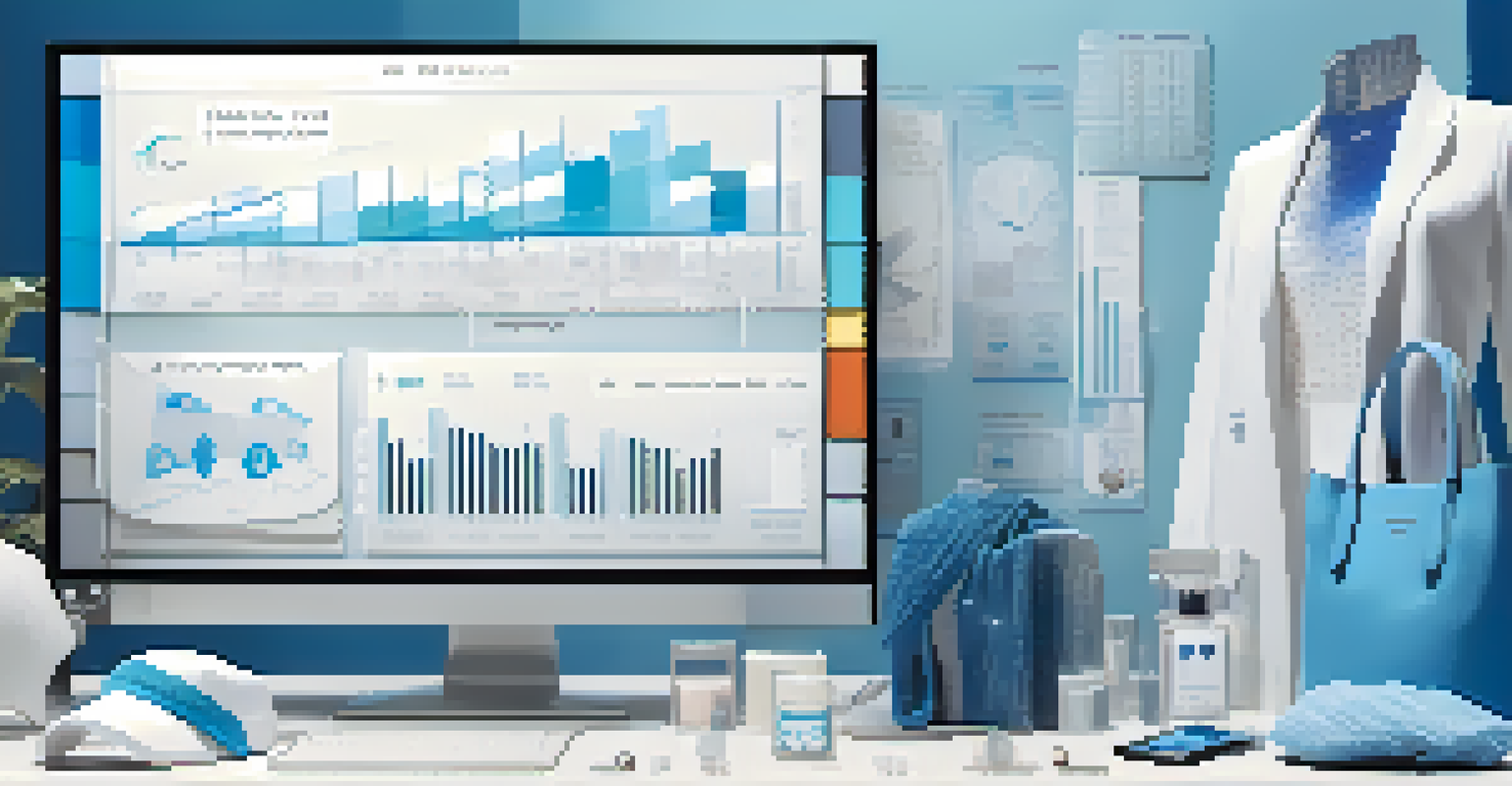Influence of Data Analytics on Personalized Fashion Trends

Understanding Data Analytics in Fashion Industry
Data analytics refers to the process of examining raw data to draw conclusions. In the fashion industry, this means analyzing customer preferences, sales data, and trends. By leveraging various data tools, brands can make informed decisions about designs, inventory, and marketing strategies.
Without data, you're just another person with an opinion.
For instance, a clothing brand might analyze social media engagement to identify popular styles among different demographics. This kind of insight helps brands understand what their customers want, allowing them to tailor their offerings accordingly. By utilizing data analytics, fashion companies can become more agile and responsive to market demands.
Moreover, data analytics isn't just about numbers; it's about storytelling. It allows brands to connect the dots between consumer behavior and fashion trends, ultimately leading to a more personalized shopping experience.
The Role of Consumer Behavior in Fashion Trends
Consumer behavior plays a pivotal role in shaping fashion trends. With data analytics, brands can track how consumers interact with their products online and offline. This information sheds light on what styles are gaining traction and which ones are fading away.

For example, if a particular shade of blue is trending on social media, brands can quickly adjust their inventory to meet this demand. Understanding consumer behavior also allows companies to create targeted marketing campaigns, ensuring they reach the right audience with the right message.
Data Analytics Drives Fashion Trends
Brands leverage data analytics to understand customer preferences and adapt their offerings to emerging trends.
Ultimately, analyzing consumer behavior helps brands create a more engaging shopping experience. When customers see styles that resonate with their preferences, they're more likely to make a purchase.
Personalization: A Key Trend in Fashion
Personalization is at the heart of modern fashion trends, driven largely by data analytics. Brands are now able to offer customized recommendations based on individual customer data, such as past purchases and browsing history. This tailored approach enhances customer satisfaction and fosters loyalty.
The goal is to turn data into information, and information into insight.
Imagine shopping online and receiving suggestions that perfectly match your unique style. This not only saves time for the customer but also increases the likelihood of a sale for the brand. The more personalized the shopping experience, the more valuable it becomes to both parties.
In a world filled with choices, personalization helps brands stand out. By using data analytics, fashion retailers can create a more engaging and relevant shopping experience that resonates with consumers.
Predicting Trends with Data Insights
Data analytics empowers fashion brands to predict upcoming trends before they hit the mainstream. By examining historical data alongside current consumer behaviors, brands can identify patterns that may indicate future preferences. This proactive approach can give companies a competitive edge.
For instance, if data shows a rising interest in sustainable fashion, brands can pivot their collections to include more eco-friendly options. By anticipating trends, companies can position themselves as leaders in the market, attracting trend-conscious consumers.
Personalization Enhances Shopping
Customized recommendations based on individual data significantly improve customer satisfaction and loyalty.
This predictive capability also allows brands to manage their inventory more effectively. Knowing what styles are likely to be popular means they can produce the right amount of stock, reducing waste and maximizing profits.
Enhancing Marketing Strategies with Data
Data analytics enhances marketing strategies by providing insights into customer preferences. Brands can tailor their campaigns based on specific demographics, ensuring they resonate with the target audience. This level of precision makes marketing efforts more efficient and effective.
For example, a brand might analyze data to find that younger consumers prefer influencer marketing, while older customers respond better to email campaigns. By adjusting their strategies accordingly, brands can maximize engagement and drive sales.
Ultimately, data-driven marketing allows brands to tell a more compelling story. By aligning their messages with consumer interests, they can create a stronger emotional connection with their audience.
The Future of Fashion: Data-Driven Decisions
The future of fashion is undoubtedly data-driven. As technology continues to evolve, brands will have access to even more sophisticated analytics tools. This will enable them to gather deeper insights into consumer behavior and preferences, further enhancing personalization.
Moreover, as consumers become more accustomed to tailored experiences, the demand for data-driven fashion will only grow. Brands that invest in analytics will be better positioned to adapt and thrive in this competitive landscape.
Predictive Insights Shape Inventory
Using historical data and consumer behaviors, fashion brands can forecast trends, optimizing inventory management and reducing waste.
Ultimately, the integration of data analytics into the fashion industry represents a significant shift. It allows brands to be more innovative, responsive, and aligned with their customers' needs.
Challenges and Considerations in Data Analytics
While data analytics offers numerous benefits, it also comes with challenges. One major concern is data privacy. As brands collect more information about consumers, they must ensure they handle this data responsibly and transparently.
Additionally, interpreting data accurately requires expertise. Brands may struggle to make sense of complex data sets without the right tools and talent. Investing in the right technology and training is crucial for effective data analytics.

Despite these challenges, the potential rewards are substantial. Brands that navigate these obstacles effectively can unlock valuable insights that drive growth and foster deeper connections with their customers.
Conclusion: Embracing Data Analytics in Fashion
In conclusion, the influence of data analytics on personalized fashion trends cannot be overstated. It allows brands to understand their customers better, predict trends, and create tailored shopping experiences. As the fashion landscape continues to evolve, data analytics will play a key role in shaping its future.
By embracing data-driven decision-making, brands can remain relevant and competitive in an ever-changing market. The insights gained from data analytics empower companies to innovate and respond to customer needs effectively.
Ultimately, as both consumers and brands embrace this data-driven approach, the fashion industry will continue to transform, making the shopping experience more personalized and enjoyable than ever before.